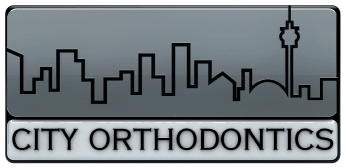Common Reasons for Braces
Your smile is the most striking part of your face. Do you like your smile now? Do you think your smile (or that of your child’s) can be improved? Orthodontics can boost a person’s self-image as the teeth, jaws, and lips become properly aligned, but an attractive smile is just one of the benefits. Alleviating or preventing physical health problems is just as important. Without treatment, orthodontic problems may lead to tooth decay, gum disease, bone destruction, and chewing and digestive difficulties. A “bad bite” can contribute to speech impairments, tooth loss, chipped teeth, TMJ, and other dental injuries. Most bite problems are inherited, therefore can’t be prevented. Other factors, such as trauma, thumb-sucking, or an early loss of baby teeth may affect the shape of your mouth, the alignment of your teeth, and your facial balance. Orthodontics is the area of dentistry that treats dental and facial irregularities.
Orthodontists use a variety of treatments, but braces are the most common method of balancing your teeth, your smile, and your face. Some of the most common reasons for braces include: Crowding — About 90% of patients have an orthodontic condition known as crowding, in which teeth are crooked, turned, or overlapped. Generally, crowding is genetic (you’ve inherited a relatively small jaw or relatively large teeth) or caused by habits such as nail biting and thumb sucking.
The bone and gums over the roots of extremely crowded teeth may become thin and recede as a result of severe crowding. Complications include teeth that should have come in but have not poor biting relationships, and an undesirable appearance. Overjet — This condition is characterized by upper front teeth that protrude beyond normal contact with the lower front teeth, making them prone to injury. Protruded upper teeth are associated with a lower jaw that is short in proportion to the upper jaw and may indicate uneven jaw growth or a poor bite of the back teeth. Thumb sucking can also cause overjet. Deep Overbite — The front lower incisor teeth biting too close or into the gum tissue behind the upper teeth characterize this condition. A deep bite can cause excessive wear of incisors, bone damage, and discomfort. Open Bite — The upper and lower incisor teeth do not touch in an open bite. This open space causes chewing pressure to be placed on the back teeth, causing chewing to be less efficient. The excessive rubbing of the teeth may also cause significant tooth wear.
Spacing — The most common concern of patients with excessive tooth spacing is poor appearance. Spacing problems happen when teeth are missing or small, or if the dental arch is very wide, leaving spaces between the teeth. Crossbite – Crossbites of both back teeth and front teeth are commonly corrected early due to biting and chewing difficulties. Uncorrected crossbite problems can lead to TMJ, premature wear of the teeth, and muscular problems in the jaw. Usually, one set of teeth will either fall inside or outside of the opposing set, leaving teeth out of place when the mouth is closed. The most common is when the upper teeth bite inside the lower teeth (toward the tongue). However, approximately 3-5% of patients have a lower jaw that is longer than the upper jaw, which causes the lower front teeth to protrude ahead of the upper front teeth. Heredity and delayed loss of baby teeth are two of the most common causes of crossbite.
Open Bite — Open bite occurs when teeth, usually the front teeth, do not make contact with each other, giving the illusion that a person’s mouth is never really closed. Thumb sucking and tongue thrusting are habits that can have an affect on the development of open bite, as can speech problems such as lisping and genetic misalignment of the upper and lower jaw. Open bite is not a common problem, and those who seek treatment do so primarily for appearance. However, patients who have moderate to extreme open bite need treatment because the condition can affect the joints of the jaw and cause recurring pain. Gummy Smile — Too much pink tissue showing when a person speaks or smiles is called a ‘gummy smile.’ This condition may result from an enlarged upper jaw, a short upper lip, short upper front teeth, a forward position of the front teeth, or disproportionate lip length or tooth height.
Spacing — The exact opposite of crowding, spacing means exactly what it sounds like…there is too much space between your teeth. Spacing occurs in approximately 5% to 10% of the population and may be caused by thumb sucking or genetic factors, such as inheriting a large jaw and small-sized teeth. Spacing may affect all of your teeth or just a portion of them. Tongue Thrust — You swallow about 2000 times each day and each time you do, 1-6 pounds of pressure is applied to the inside structures of the mouth. Normally when you swallow, your tongue is placed on the roof of the mouth, however, when the tongue slides between and behind the teeth, this pressure can push the teeth apart and out. Known as ‘tongue thrust,’ this abnormal swallowing can cause causing distortions of the face and teeth. It is most common in children with prior severe thumb sucking habits. Working with a speech therapist may help this behavior, but in severe cases, a special orthodontic appliance that inhibits this damaging tongue movement may be prescribed. It is estimated that more than 5 million people in the United States and Canada are in the care of an orthodontist and looking forward to the day their braces come off and they can see their beautiful, healthy smiles in the mirror.

